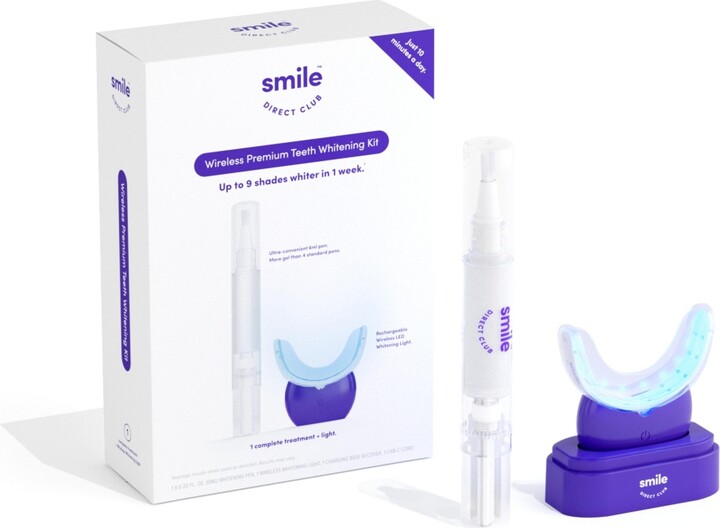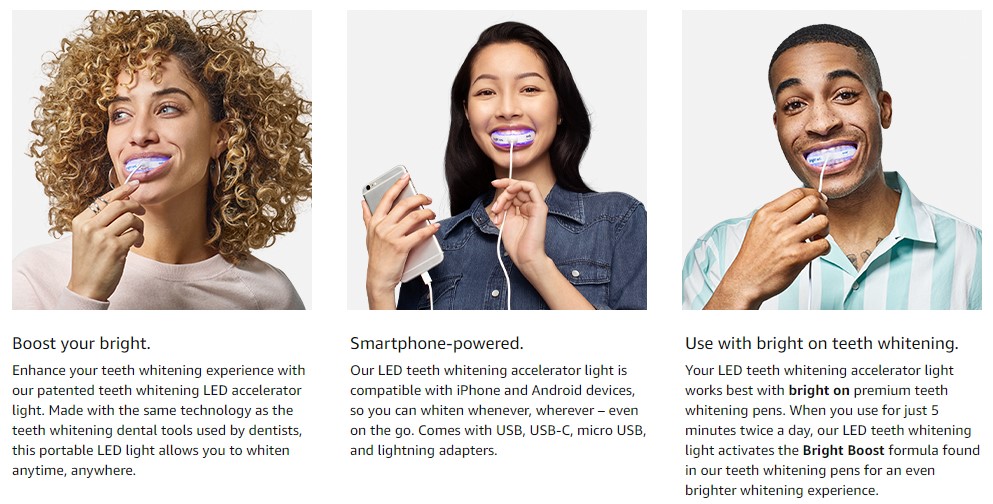Smile Direct Club Bright On Premium Teeth Whitening Kit

The quest for a brighter smile has fueled a multi-billion dollar industry, promising consumers a quick and easy path to pearly whites. Among the numerous over-the-counter teeth whitening options, Smile Direct Club's Bright On Premium Teeth Whitening Kit has emerged as a prominent contender.
However, the efficacy and safety of such products are constantly under scrutiny, raising important questions about their potential benefits and risks for consumers seeking a convenient whitening solution.
This article delves into the Bright On kit, exploring its components, usage, claimed benefits, and potential drawbacks. It analyzes available information from the manufacturer, dental professionals, and consumer reports to provide a comprehensive and balanced assessment of this popular teeth whitening product.
What is Smile Direct Club Bright On?
Bright On is a teeth whitening kit marketed directly to consumers by Smile Direct Club, a company known primarily for its clear aligner orthodontic treatments.
The kit is designed for at-home use and aims to provide professional-level whitening without the need for a dentist visit. It distinguishes itself through its direct-to-consumer model and claims of ease of use and noticeable results.
Components of the Kit
The Bright On kit typically includes whitening gel syringes, LED light devices, and custom-fit mouth trays. The gel contains hydrogen peroxide or carbamide peroxide, the active whitening ingredients commonly used in dental offices.
The LED light is intended to accelerate the whitening process, although its effectiveness is debated within the dental community.
The custom-fit mouth trays, are created using a mold kit provided, meant to ensure even gel distribution and minimize gum irritation.
How Does Bright On Work?
The whitening process relies on the peroxide-based gel oxidizing stains on the tooth enamel. When the gel is applied to the teeth, it breaks down into oxygen molecules that penetrate the enamel and bleach away discoloration.
The LED light, according to Smile Direct Club, enhances this process by activating the whitening agents and accelerating the breakdown of stains.
Users typically apply the gel to the trays and wear them for a specified period each day, as instructed in the kit's guidelines. The duration of treatment varies depending on the desired level of whitening and individual tooth sensitivity.
Claimed Benefits and Potential Risks
Smile Direct Club promotes Bright On as a cost-effective and convenient alternative to professional teeth whitening. They highlight the kit's ability to deliver noticeable results in a relatively short period, often within a week or two.
Many users report achieving a brighter smile and improved confidence after using the product.
However, like all teeth whitening products, Bright On carries potential risks. The most common side effects include tooth sensitivity, gum irritation, and uneven whitening.
Concerns About Sensitivity and Gum Irritation
Tooth sensitivity occurs when the whitening agents penetrate the enamel and irritate the nerves within the teeth. This is a common side effect of peroxide-based whitening and can range from mild discomfort to sharp pain.
Gum irritation can result from the whitening gel coming into contact with the gums, causing inflammation and redness. Improperly fitted mouth trays can exacerbate this issue.
It is important for users to carefully follow the instructions and avoid overusing the product to minimize these risks.
Expert Opinions and Scientific Evidence
Dental professionals have mixed opinions on over-the-counter teeth whitening kits like Bright On. Some acknowledge that these kits can be effective for mild to moderate staining.
However, they caution that they may not be suitable for everyone, particularly those with existing dental issues like cavities, gum disease, or sensitive teeth.
Additionally, some studies suggest that the efficacy of LED lights in accelerating teeth whitening is minimal. A dentist is best positioned to determine suitability.
Importance of Dental Consultation
Many dentists recommend consulting with a dental professional before using any teeth whitening product. A dentist can assess a patient's oral health, identify any underlying issues, and recommend the most appropriate whitening treatment.
Professional teeth whitening treatments typically involve higher concentrations of whitening agents and are administered under the supervision of a dentist, reducing the risk of complications.
Moreover, a dentist can provide custom-fitted mouth trays and monitor the whitening process to ensure optimal results and minimize side effects.
Consumer Reviews and Feedback
Consumer reviews of Bright On are varied, with some users reporting significant improvements in their smile's brightness, while others express disappointment with the results or experience adverse effects.
Positive reviews often highlight the kit's ease of use and affordability. Negative reviews frequently mention tooth sensitivity, gum irritation, and uneven whitening.
It's important for consumers to read reviews critically and consider that individual experiences may vary based on factors such as tooth condition, sensitivity levels, and adherence to the product instructions.
The Future of At-Home Teeth Whitening
The market for at-home teeth whitening products is expected to continue growing, driven by consumer demand for affordable and convenient solutions.
As technology advances, we may see the development of more effective and safer whitening products, potentially including innovative delivery systems and whitening agents. The role of artificial intelligence to tailor treatment is also an open frontier.
However, it's crucial for consumers to remain informed about the potential benefits and risks of these products and to prioritize their oral health by consulting with a dental professional before embarking on any whitening regimen.

















